Greece is full of Ancient Greek Theatres! This article sheds some light on the origins and the importance of theatre in Ancient Greece. It also lists some of the theatres you can visit in Greece.
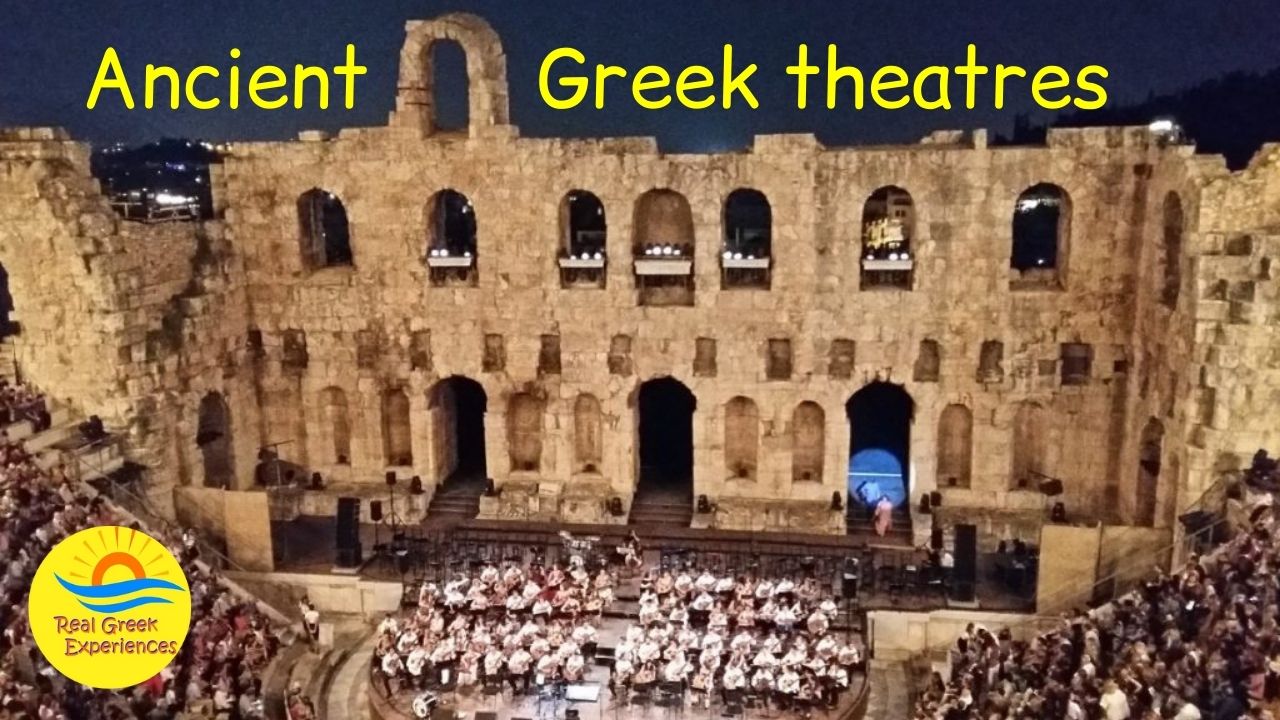
Ancient theatre in Greece
Theatre is one of many forms of art, where a story is acted out to an audience. Typically, a theatrical performance uses elements like speech, singing, dance and music, but also visual arts and other stimuli.
In our days, there are plenty of easily accessible theatrical shows. This wasn’t always the case though. Have you ever wondered how theatre came about?
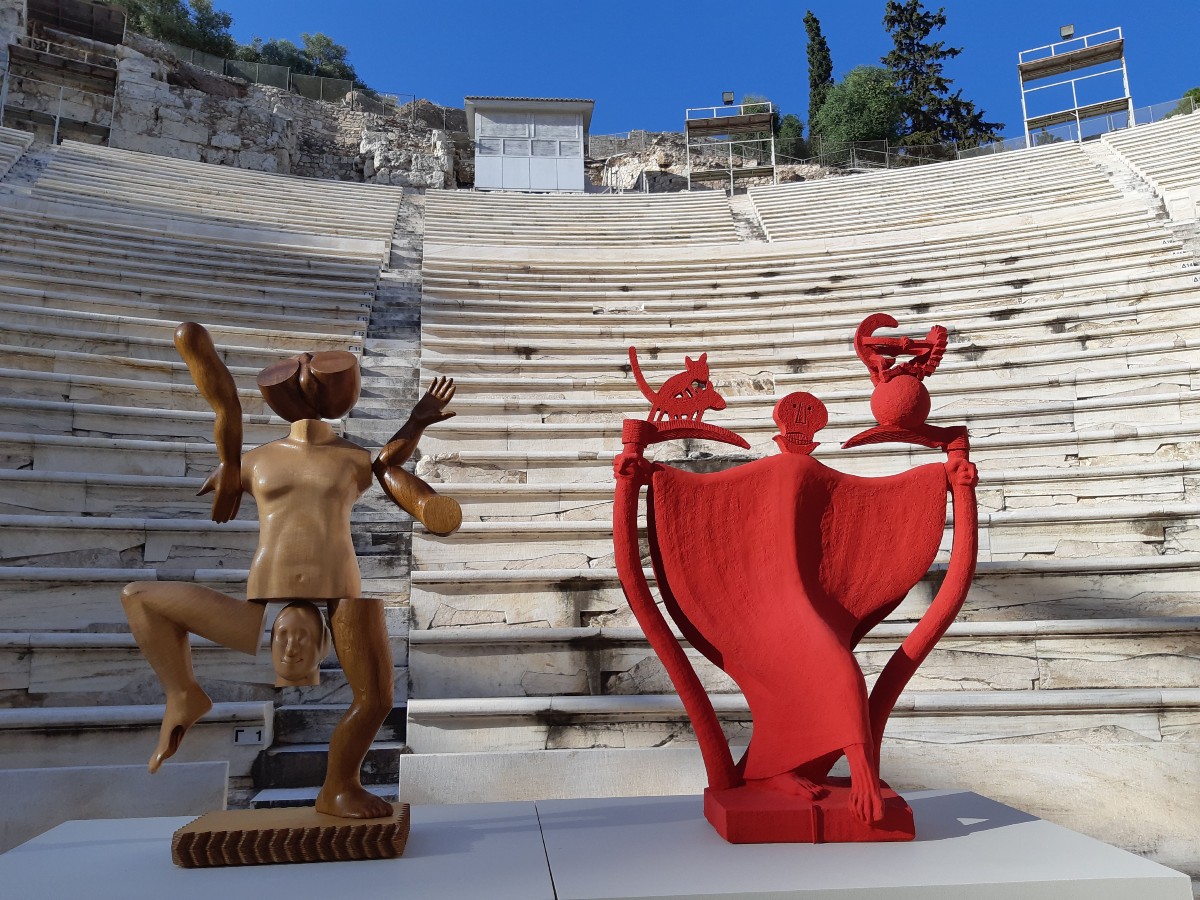
To answer this question, we need to travel back to Ancient Athens. This is where the art of theatre first appeared in the 6th-5th century BC, among many new ideas and concepts.
Performances were originally introduced as a tribute to a popular god, Dionysus. They were staged in the newly built theatre of Dionysus, right underneath the Acropolis hill.
In the next centuries, and during the Hellenistic and Roman eras, the art of theatre reached many city-states in Greece and beyond.
Theatres of the ancient Greek world were constructed outdoors, often on mountain slopes. Just like the theatre of Dionysus in Athens, they were typically dedicated to a god.
Ancient Greek theatre layout
A lot has been written about the architecture of Ancient Greek theatres. While rectangular and oval-shaped theatres existed, the most common layout was semi-circular.
This arrangement consisted of several rows of tiered seating, ensuring better visibility and acoustics for all members of the audience.
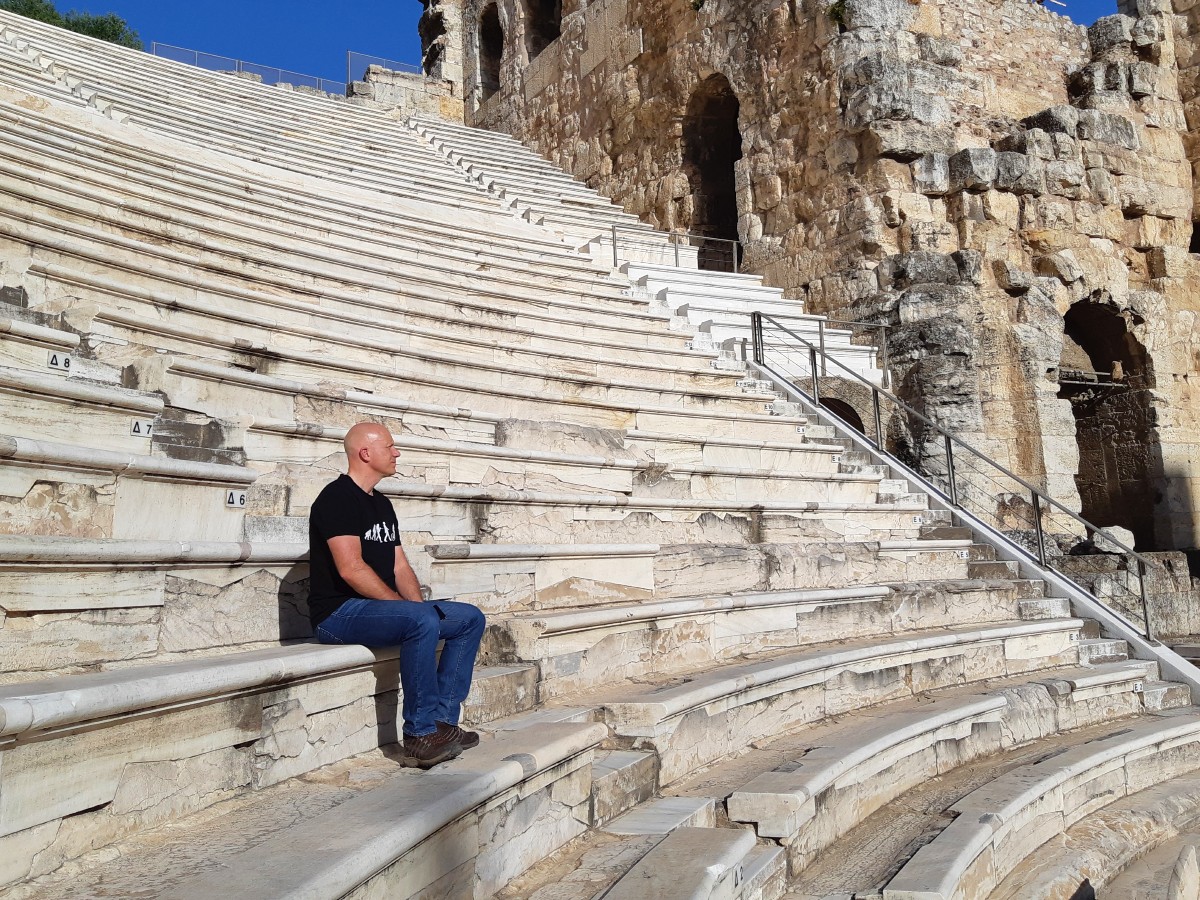
The focal point of the theatre was the stage where performers appeared, known as the orchestra. Normally, there was an altar on the stage, where sacrifices were made to the patron god.
The seats were typically made of wood, stone or marble. In many cases, the original wooden seats were eventually replaced by stone or marble seats, that were more weather-resistant.
Often, the seats closest to the orchestra were reserved for officials and other prominent citizens. Marble seats with inscriptions of the officials’ names are still visible in many theatres around Greece.
Dionysus and ancient theater in Greece
Let’s look a little further into the god who was behind this unique form of art.
At around 600 BC, the cult of the God Dionysus was introduced in the powerful city-state of Athens. The tyrant Peisistratos, who was the ruler of Athens at the time, launched a new festival in his honour.
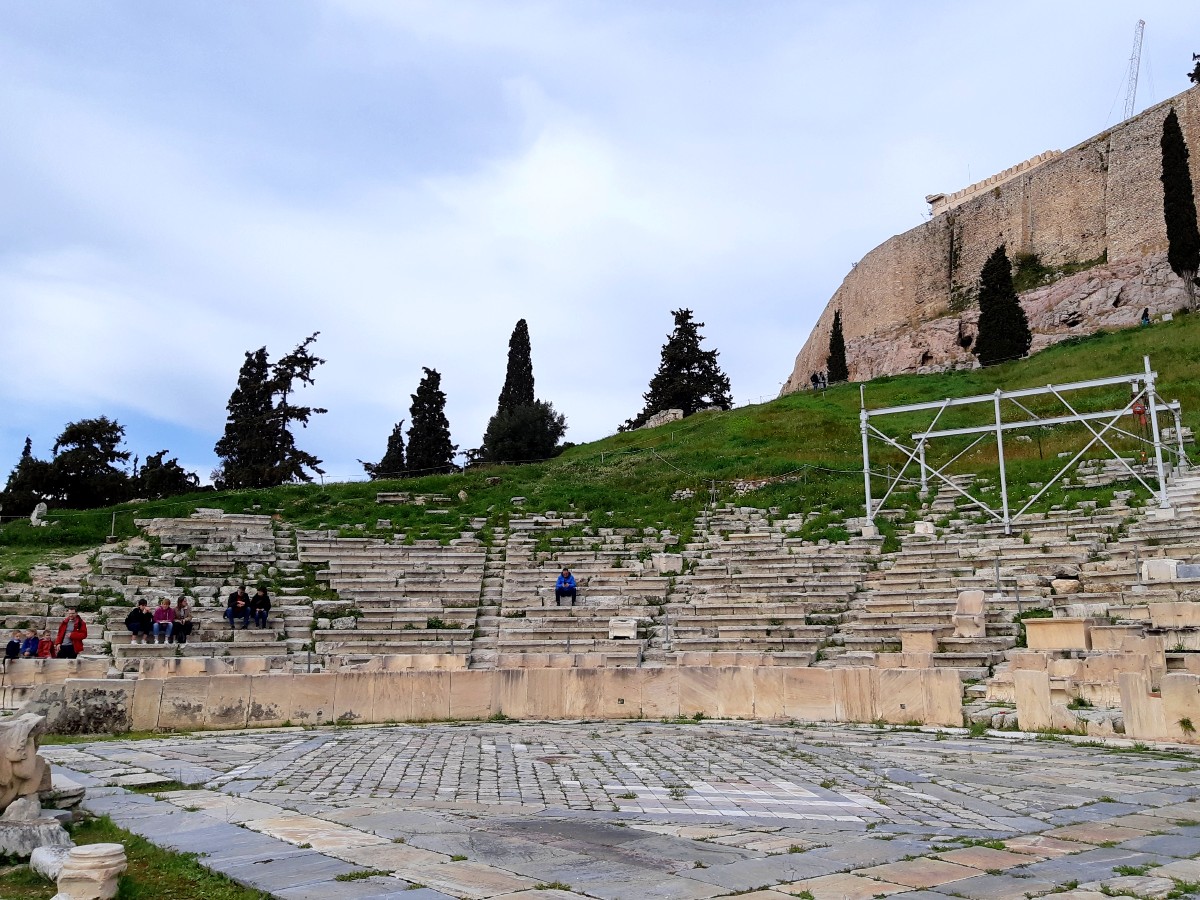
This major multi-day event was named Dionysia, and soon became extremely important for Athenians. It involved processions, chanting and sacrifices, but its highlights were theatrical plays and competitions.
Ancient Greek tragedy
The first distinct types of theatre that flourished in Ancient Athens were tragedy, comedy and satyr play.
Prominent Greek tragedians, namely Aeschylus, Euripides and Sophocles, wrote some of their best-known works for the Dionysia festivals.
In fact, up until the Hellenistic period, each tragedy was written to honour Dionysus and only played once.
As a rule, ancient Greek theatrical shows consisted of a mix of speech, dance and music. All actors, dancers and other people involved in the performances were male.
During the shows, performers wore costumes and solid face masks. The latter were made of several materials, like wood, leather, or a mix of fabric and a thin layer of plaster.
As the audience was often far from the stage, the actors had to use expressive and exaggerated gestures.
Ancient Greek comedy
Aristophanes is the best known comedy writer in Ancient Greece. He is famous for using profanity in his plays, which made the audience laugh.
Incidentally, many of the modern Greek swear words have their roots in ancient Greece.
The cult of Dionysus and Greek ancient theatre
So, who exactly was this infamous deity? Perhaps unsurprisingly, he was one of Zeus’ out-of-wedlock children. His origins may be somewhere in the lands of Ancient Phrygia or Lydia, both in modern Turkey.
Although he was not one of the twelve Olympians, he has great significance among the pantheon of Ancient Greek gods.
In contrast to his half-brother Apollo, Dionysus had a dark side. He was the protector of grape harvest, wine and fertility, but also drunkenness, insanity and theatre.
Overall, the cult of Dionysus was connected to occult practices, religious ecstasy, and secret rituals. In fact, little information has been discovered. Much of the Dionysian Mysteries remains exactly that – a mystery.
Ancient Greek theatre masks
Remember the solid masks worn on the theatre stage? They were very carefully thought through.
The actors could, literally, hide their true feelings behind a mask. They could then enter a state of frenzied ecstasy, which was further induced by the rhythmical music.
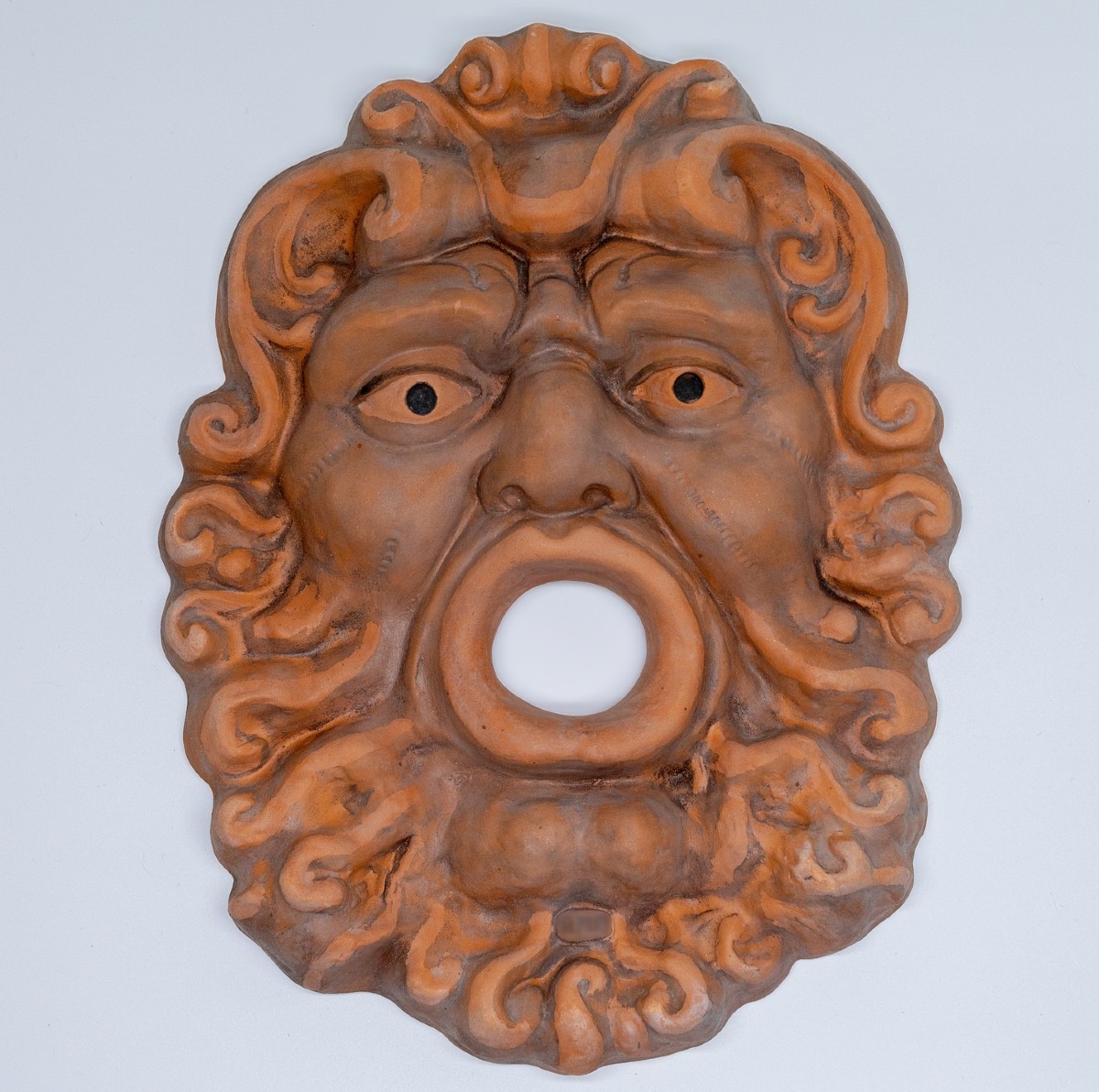
This state of trance was just in line with the obscure rituals of the Dionysian cult. Any similarities to modern-day practices and events, like for example the carnival, might not be entirely coincidental!
What does “theatre” actually mean?
And now some geeky information about the word “theatre” itself!
The word “theatre” derives from the ancient Greek word theatron (θέατρον). Originally, this word was used to describe the audience. Later, it encompassed the actual stage, the whole of the ancient Greek theatre, and also the performance itself.
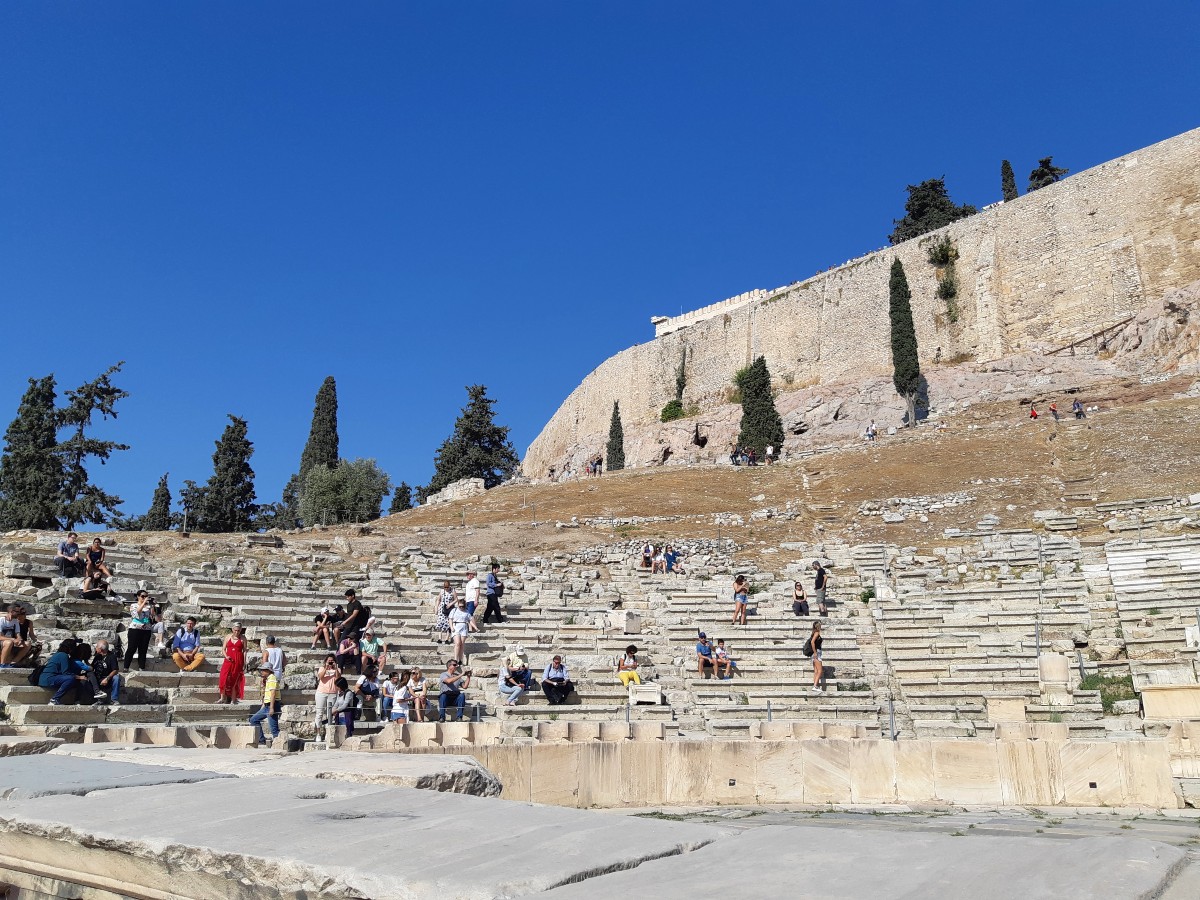
Like other words beginning with the Greek letter θ, “theatre” is connected to the human mind and its mysteries. It’s no coincidence that the words God (Θεός), miracle (θαύμα) and therapy / cure (θεραπεία) all start with the same letter.
Ancient Greek theaters were sometimes built in sacred sites called Asklepieia. These sites were the equivalent of modern-day hospitals, or treatment centres.
God’s synergy was necessary for people to be cured at the Asklepieia, perhaps in the form of a miracle. The theatres were built to honour the gods, who would help people get well.
And now for the twist! Ancient Greeks treated the mind, the body and the soul (psyche, or ψυχή) in a holistic way. Unless the soul was healed, the body would remain sick.
As a result, watching theatrical performances was an integral part of the therapeutic procedure for patients.
In other words, ancient theaters were not only a place for entertainment and fun. Theatres were created in order to guide, and eventually cure, the soul.
The ancient Greek word “ψυχαγωγία”, very loosely translated into “entertainment”, means exactly that – guiding of the soul. This was the primary purpose of the theatre. We could perhaps call it ancient art therapy!
Theatres of Ancient Greece
Today, it is possible to visit many Ancient Greece theatres. In fact, some of them host concerts, dance shows, performances and other events.

If you are going to Greece in summer, by all means look out for information. Watching a performance in one of Greece’s theatres is an absolutely unforgettable experience!
Here are 9 of the most famous Greek theaters:
- Theatre of Dionysus in Athens
- Herodion theater Athens Greece
- Ancient theatre of Thoriko
- Ancient theater of Epidaurus
- Delphi theatre in Greece
- Ancient theatre of Dodoni
- Theatre in Ancient Delos
- Ancient theatre of Argos
- Theatre of Ancient Messene
There are plenty of other important Greek ancient theatres all around the country. These include the theatres of Lindos (Rhodes), Aigeira (Peloponnese), Thebes (Viotia), Santorini, Milos, Kassopi (Preveza), Avdira (Xanthi), Corinth and many more.

The theatre of Ephesus in modern-day Turkey
In addition, you can visit theatres of the ancient world in other nearby countries, like Italy, Cyprus, Turkey, Egypt, Albania, Tunisia and Jordan. Most of those were constructed during the Hellenistic or Roman era.
For now, let’s look at the best ancient theatres in Greece.
1. Theatre of Dionysus in Athens
This is where it all began! Built to honour Dionysus, this was the most important theatre in Ancient Athens. Fittingly, it was built right underneath the slopes of the Acropolis.
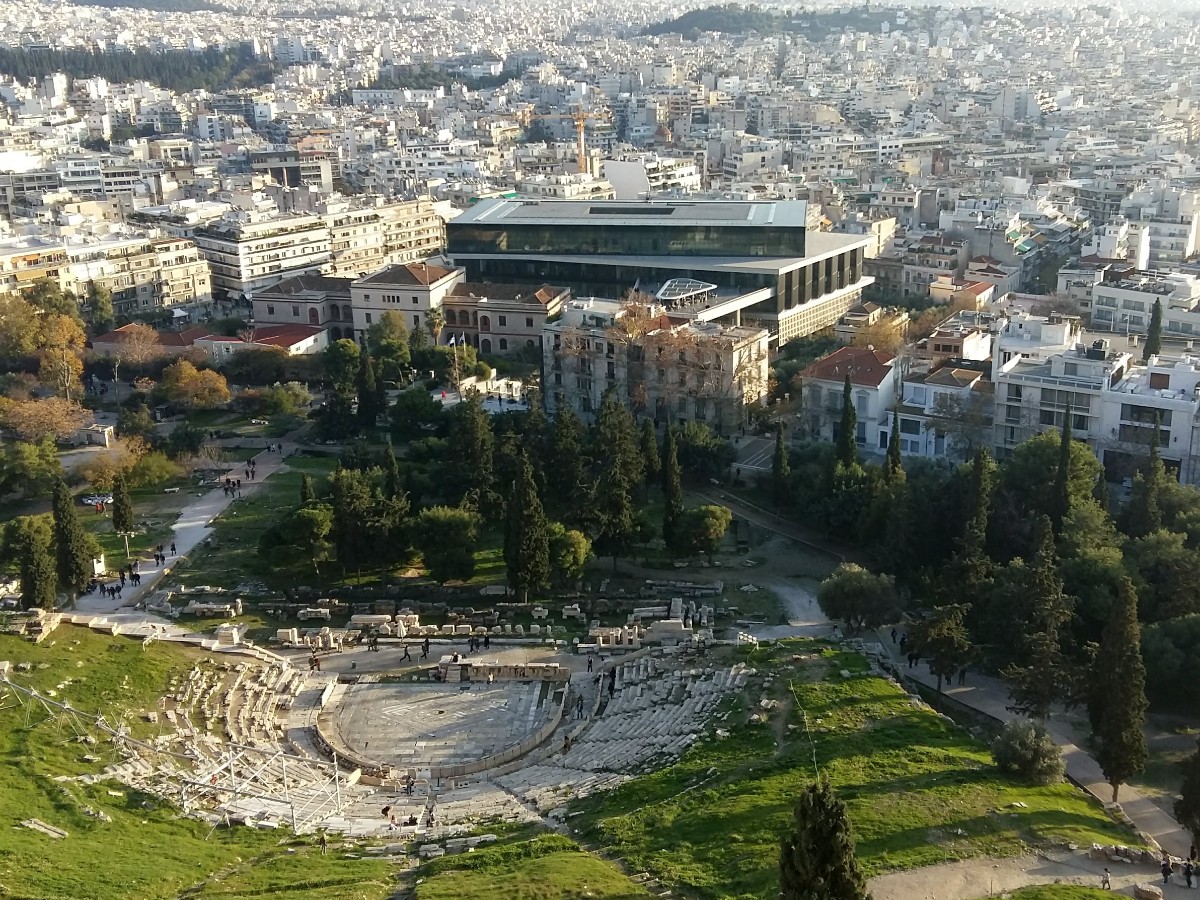
The theatre of Dionysus Eleuthereus was first constructed between 560 – 530 BC, about a hundred years before the Parthenon. This makes it the oldest theatre in the world. It was at first made of wood, and the seats were laid out on a scaffolding.
In order to improve stability and safety, a new theatre was built at around 350 BC. The main materials used were stone and marble, that have stood the test of time.
The new theatre was a fabulous architectural accomplishment, not least due to its size. It is estimated that it could accommodate 17,000 – 19,000 spectators.
Its layout with tiered seating took advantage of the natural terrain slope. It was later reproduced in several dozens of theatres around the ancient Greek and Roman world.
More changes and alterations took place over the next centuries, and new architectural elements were introduced. The theatre was severely damaged during the invasion of the Heruli, in 267 AD.
The end of the Dionysia festival
It appears that the Dionysia festival continued until 529 AD, when Justinian the Great banned all practices of the ancient world.
In later centuries, other monuments were raised in the area, and the theatre was partially buried. Excavations began in 1862, and much of the thick layer of soil was removed, to reveal the ancient ruins.
Today, the theatre of Dionysus can be visited with your Acropolis ticket. If you look carefully, you will notice inscriptions on the first-row seats.
2. Odeon of Herodes Atticus / Herodion theater, Athens Greece
The Odeon of Herodes Atticus is one of the most emblematic ancient Greece theaters. Located just underneath the Acropolis Hill, it is an imposing landmark of Athens.
This majestic theatre was commissioned between 160-174 AD by Herodes Atticus, a wealthy orator, philosopher and writer. The theater was built in memory of his wife, Regilla, and could accommodate around 5,000 people.
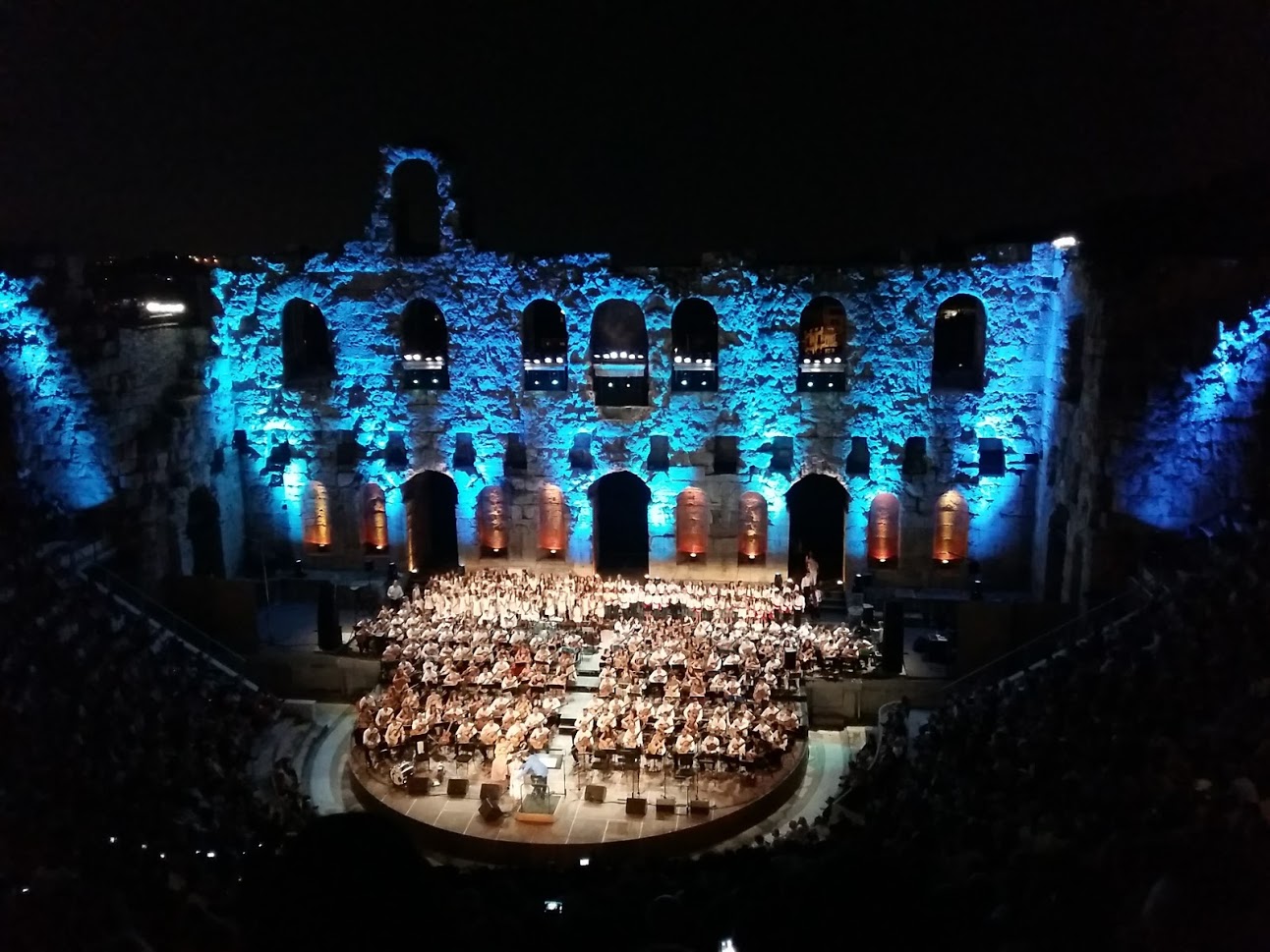
Herodion was partly destroyed during the Heruli invasion in 267 AD. It remained abandoned for several centuries, and was gradually incorporated within the fortifications of the city of Athens.
The first excavations began in the 1850s, but it wasn’t until the 1950s that the beautiful ancient site was restored. Since then, it has hosted numerous performances, concerts and shows, often with world-famous artists.
Originally, the Herodion was covered with a lavish wooden roof, which has not survived. Fortunately, the impressive arches are still in place, providing a fabulous background for performers.
Modern-day concerts in Herodion
Concerts and other shows are held in Herodion during spring, summer and autumn. Some of them are part of the Athens & Epidaurus festival, and you can book your tickets in advance. In addition, there are usually plenty of other events.
Apart from rare exceptions, Herodion is only accessible during these performances. There are few experiences in Athens that are as special as attending a show in this amazing theatre, so don’t miss it!
If there are no shows when you visit, you can have a great view from above when you visit the Acropolis.
3. Ancient theatre of Thoriko, Attica
The outdoor Greek theater of Thoriko, or Thoricus, doesn’t often feature in Greek itineraries. However, this theatre is considered to be the oldest theatre in Greece which still exists in its original form.
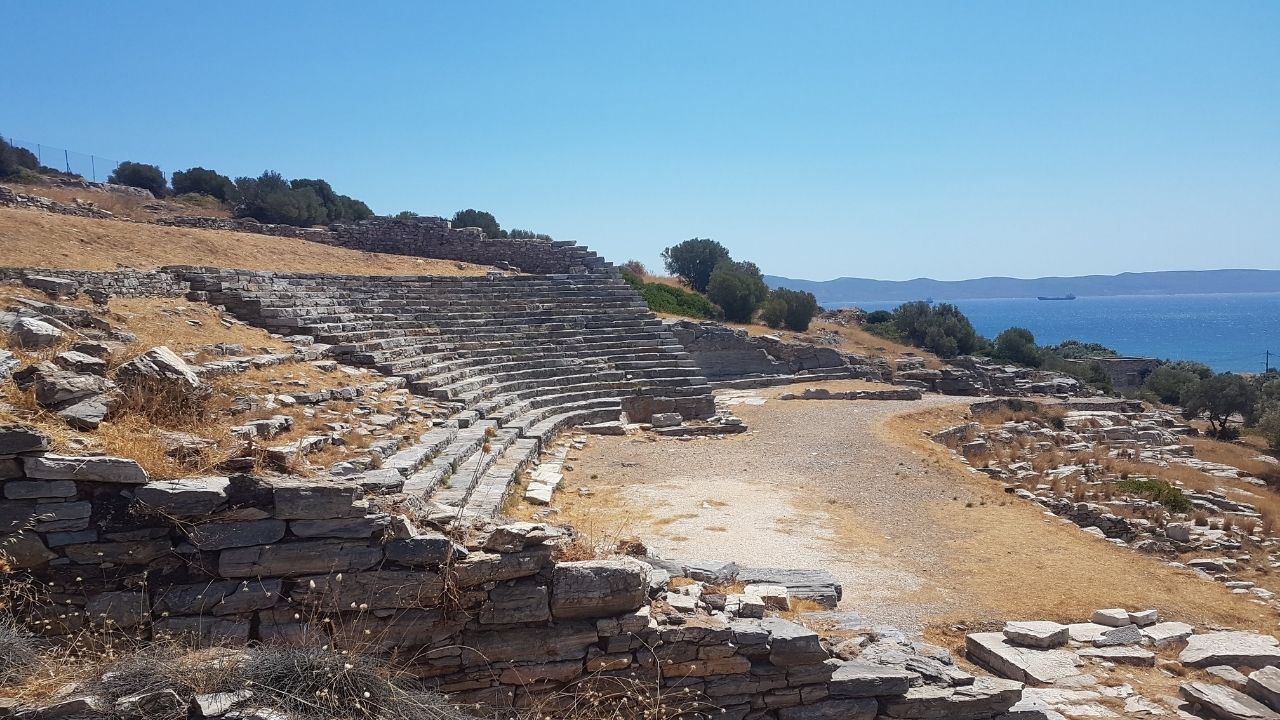
The ancient theater of Thoriko is estimated to have been built between 525 – 480 BC. Unlike theatres that were built later, its layout wasn’t semi-circular, but oval-shaped, with a rectangular orchestra. It is estimated that its maximum capacity was 3,200 spectators.
Excavations have shown that the site used to be a limestone quarry. Due to the consistent mining, it was gradually shaped into a flattened area that was used for the citizens’ assemblies. Eventually, the theatre was not only used for performances, but also for teaching of drama and other functions.
There is no entrance fee or even a fence to the site, so you can visit the ancient ruins anytime of the day or evening. And while it’s not as imposing as other Greek theaters, when you think of how old it is you’ll find it amazing that the ruins still exist!
The temple of Poseidon at Cape Sounion
The theatre of Thoriko is a short drive away from the famous temple of Poseidon at Cape Sounio, so you can combine them in the same trip, especially if you are driving yourself.
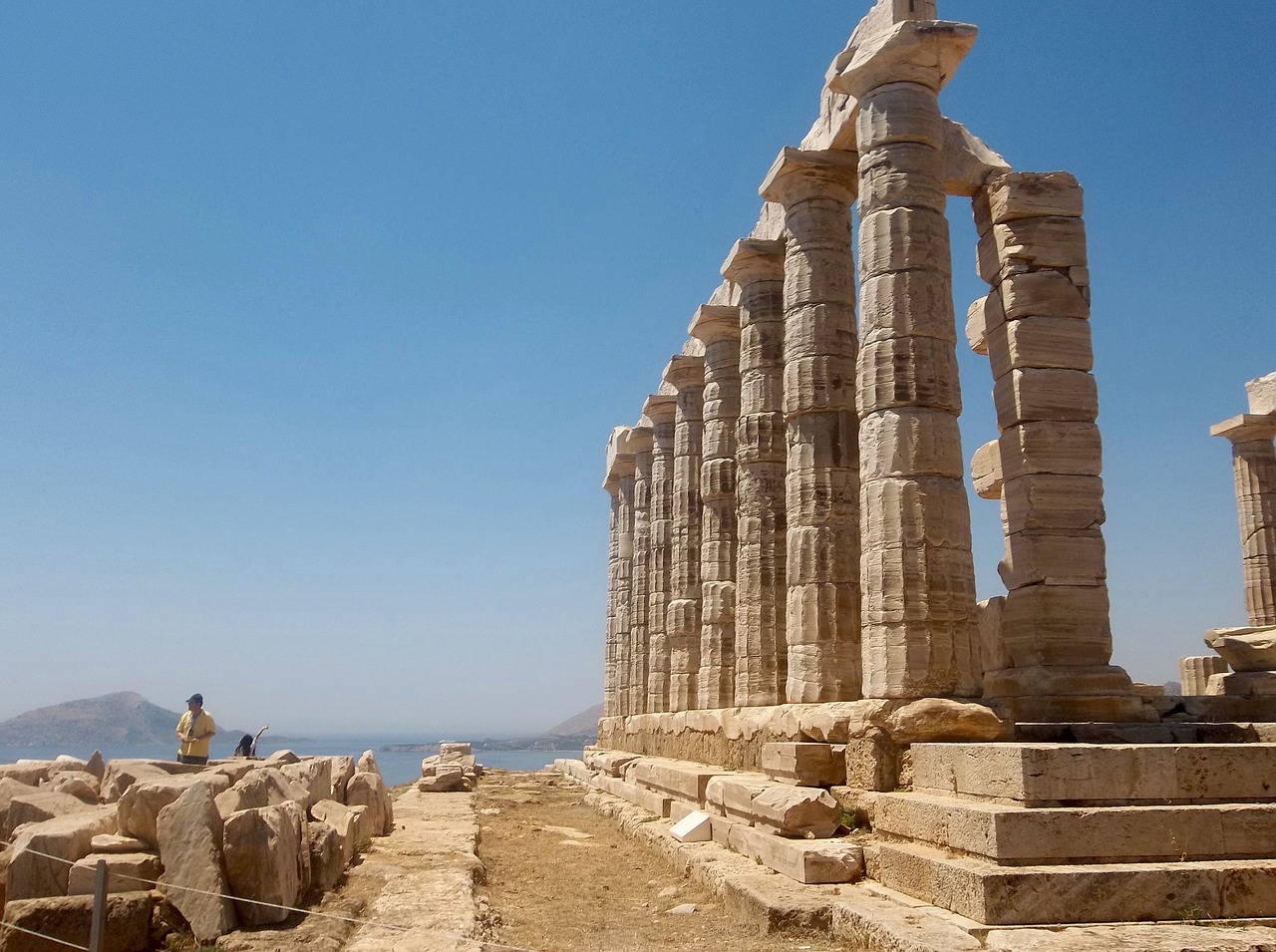
Other important landmarks in the area include the mineral-extracting facilities of Lavrio, a cemetery, and a small temple dedicated to Dionysus.
4. Ancient theater of Epidaurus
The theatre of Epidaurus is one of the most iconic ancient Greek theatres. It can be found within a larger archaeological site, the Sanctuary of Asklepios in the Peloponnese.
Ancient Greeks had done a lot of research on health, wellness and therapy. Areas with therapeutic springs were the best places to build large healing centres, called Asklepieia. Ancient Epidaurus was one of these places.
A sanctuary of God Asklepios, the god of healing, was constructed around 380 BC. The site comprised several buildings, including a guesthouse, a treatment centre, a gymnasium, a stadium, baths and a banqueting hall.
The theatre itself was constructed a few decades later. It was built both as a tribute to Asklepios, and a means of providing entertainment to the patients and the carers.

Like other ancient sites in Greece, the theatre of Epidaurus was partially buried under debris. It was excavated in the 1880s, and constitutes the best preserved ancient Greek theatre.
Here is some more information about the Ancient theater of Epidaurus. You can get there on your own, or with a guided tour including other sites in the Peloponnese.
Performances in the Ancient Theatre of Epidaurus
The first thing you will notice when you visit the theatre is the amazing setting. Surrounded by thousands of trees, the location is incredibly peaceful. In addition, the theatre has some of the best acoustics in the world.
During the Athens & Epidaurus festival, performances are held here on most summer weekends. If you can fit this in your itinerary in Greece, by all means do, as it’s a lifetime experience.
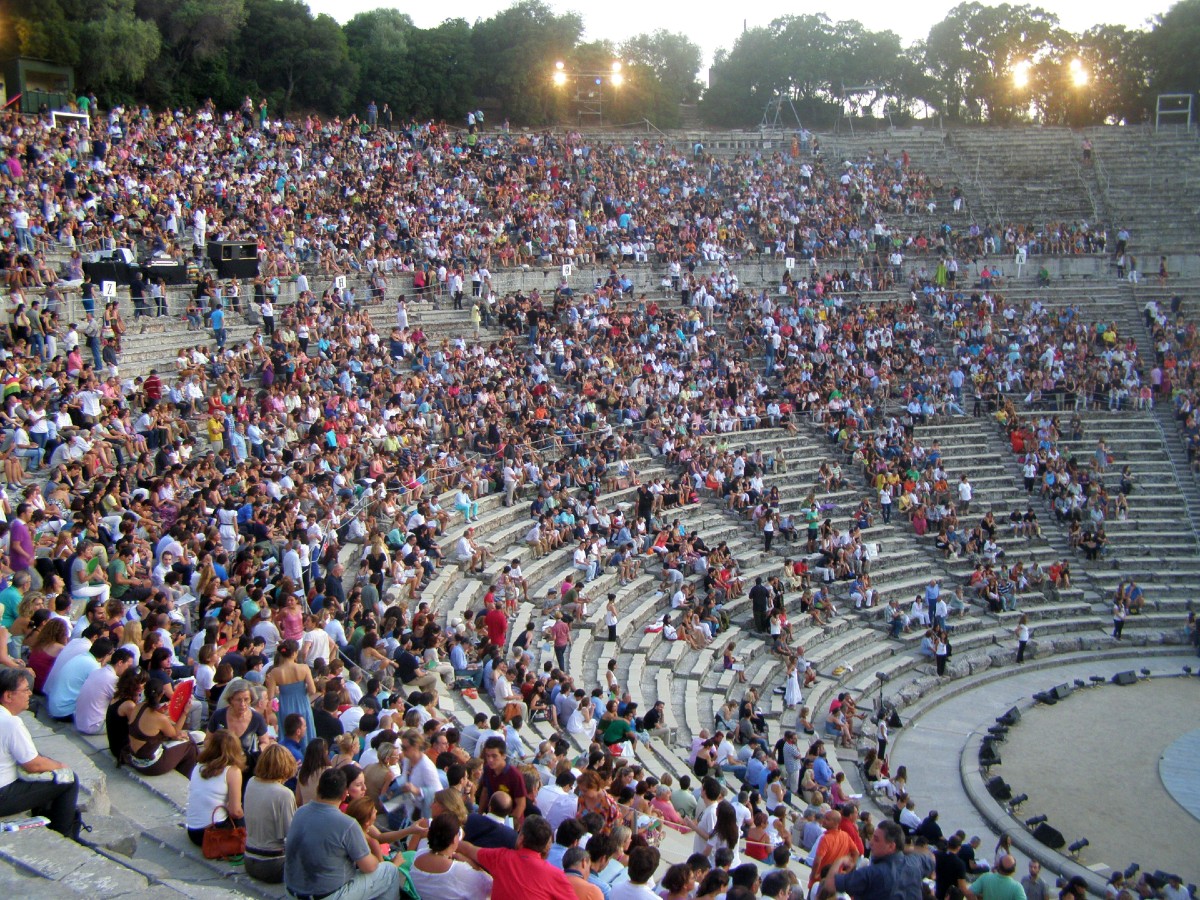
Even though the theatre has a capacity of 14,000 people, shows can often get sold out, so make sure you reserve your seats well in advance.
And if you are not visiting Greece anytime soon, the ancient theater features in a couple of movies about Greece!
5. Delphi theatre in Greece
The archaeological site of Delphi is one of the most visited sites in Greece. Delphi was considered to be the most sacred place in ancient Greece, the so-called “navel of the world”. The setting is absolutely magnificent, so this choice is easily justified!
Apollo, the god of light, music, arts and grace, liberated Delphi from an ancient serpent, Python. To honour the liberator god, a grand sanctuary was built on the slopes of mount Parnassos.
This is where the famous oracle, Pythia, delivered her prophecies.

The Ancient theatre of Delphi was one of the largest monuments in the sanctuary. It was made out of local limestone in the 4th century BC, and may have replaced an earlier, wooden construction.
In later centuries, there were extensive restorations and refurbishments, including major works in 160/159 BC. The theatre that has survived had a capacity of around 5,000 people.
Every four years, the Pythian games, an important religious festival, was organized in Delphi to celebrate Apollo. The Games consisted primarily of musical contests, both singing and instrumental music, that were hosted in the Delphi theatre.
Similarly to the Ancient Olympic Games, there were also athletic competitions. These were held in the Delphi stadium, which is a short walk up the hill from the ancient theatre.
The Ancient Theatre of Delphi today
The ancient site of Delphi was excavated in the late 1800s. A theatrical performance was held in the theatre in 1927, as part of an ambitious cultural project. However, this was soon discontinued.
Due to safety reasons, only a limited number of performances has been held here over the years.
It is possible to get to Delphi on your own, by bus or rental car. However, I would suggest that you take an organized tour from Athens, as you will learn a lot more about the fascinating history of the place.
Here is some more information about the Ancient site of Delphi, including how to visit.
6. Ancient theatre of Dodoni (Dodona)
The ancient theater of Dodona is one of the largest ancient Greek theatres, with a capacity of around 18,000 people. It is located in the Region of Epirus, a short drive from the picturesque city of Ioannina.
Ancient Dodona was originally a sacred place where Gaia, Mother Earth, was worshiped. Later, it became a sanctuary for the king of the Olympian Gods, Zeus, and a minor goddess, Dione.
Various conflicting stories exist about Dione. According to one version, Dione was Zeus’ wife, and also the mother of goddess Aphrodite.
The area of Dodoni was the home of the earliest Oracle in Greece, dating from the 3rd millennium BC. This was many centuries before Pythia, the Oracle in Delphi, appeared. The first priests were male, but women priestesses appeared in later years.
The sanctuary increased in size and importance during the reign of Pyrrhus, the King of Epirus, in the early 3rd century BC. Several buildings, temples and monuments were built, including a stadium and the massive theatre of Dodoni.

To honour Zeus, Pyrrhus established the Naia Games. The festival consisted of athletic games and theatrical performances, and possibly music competitions and chariot races.
The Naia Games took place every four years, one year after the Olympics and one year before the Pythia.
The theatre was reconstructed and restored over the years, and was used as an arena during the Roman Era. It was abandoned around the 4th century AD.
The ancient theatre of Dodona today
Excavations in the Ancient theatre of Dodoni began in 1875 and are ongoing. Today, performances and other events are occasionally organized in the impressive theatre.
The site can be visited year-round, and is one of the most amazing places to visit in Epirus.
7. Theatre in Ancient Delos
Close to the world-famous island of Mykonos, we can find the ruins of Ancient Delos. This is one of the most fascinating ancient sites in Greece, not least because getting there is a small adventure!
In ancient Greek mythology, Delos was the birthplace of two Olympian gods, Apollo and Artemis. The sanctuary of Apollo became a significant place for all Greeks to visit on a pilgrimage.
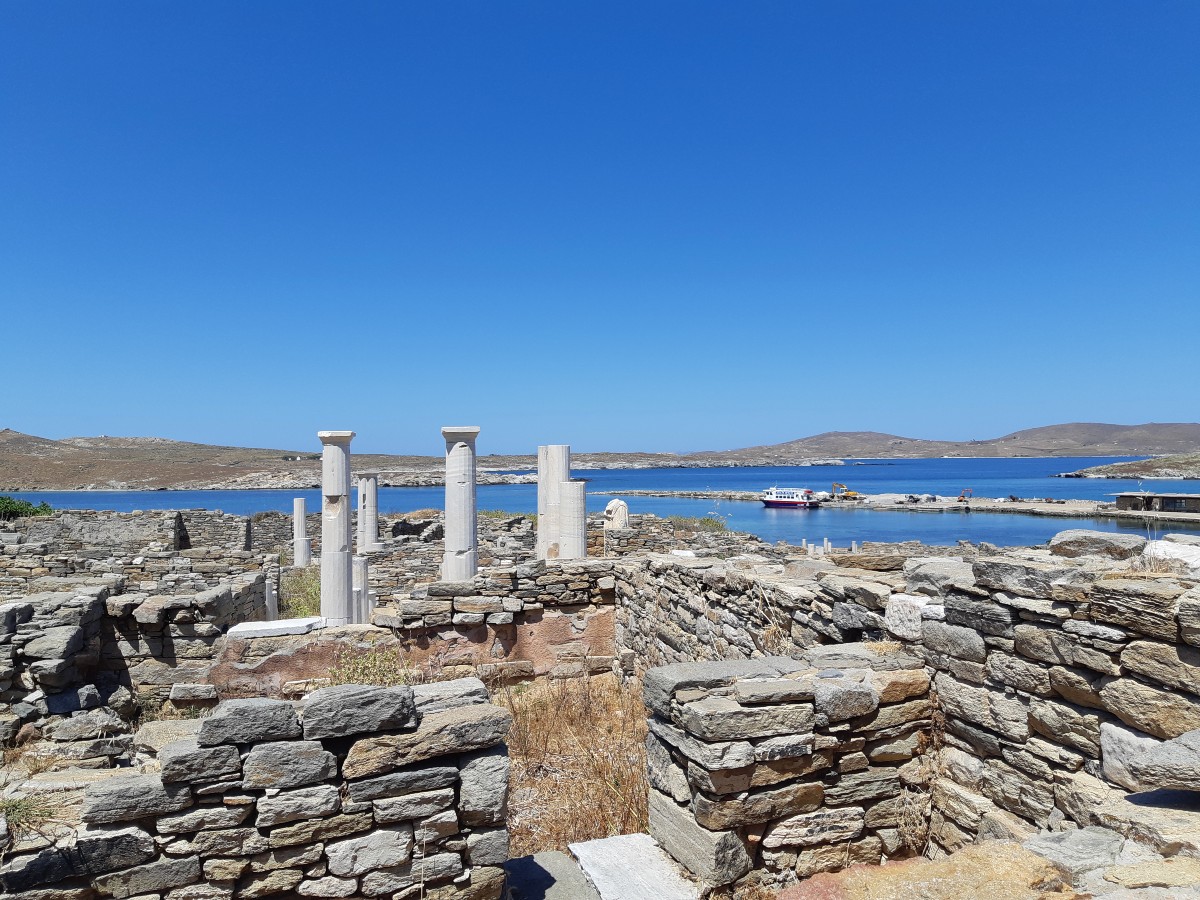
During the Hellenistic and Roman eras, the island became an important port and commerce hub. Thousands of people from nearby lands came to live here, and monumental buildings were constructed.
These included temples, sanctuaries, several public buildings, luxurious private mansions and an impressive cistern.
The theatre in Delos was built between around 314-250 BC and had a capacity of about 6,500 people. The main material used was marble, which reflects the wealth of the island.
How to visit Delos today
Like the rest of Delos, it was mostly abandoned over the centuries. The French School at Athens started excavations on the island in 1873, and works are still ongoing.
During the excavations, many of the building blocks of the theatre were removed and placed around the island, without being systematically recorded. As a result, the area around the Greek theatre of Delos is full of large marble pieces.
Even though the theatre is not restored, a handful of performances have been staged here in recent years. For safety reasons, only a few dozen spectators were allowed.
Hopefully, future restoration works will allow this incredible theatre to reach its former glory.
Today, you can visit Ancient Delos on a half-day trip from Mykonos. For more information, have a look at this article about the island of Ancient Delos.
8. Ancient theatre of Argos
The impressive ancient theatre of Argos is close to Nafplio in the Peloponnese, only an hour and a half away from Athens.
The theatre of Argos was built in the 4th century BC, alongside many existing temples and sanctuaries. It replaced an older, smaller theatre in the wider area.
Its capacity was around 20,000 people, which made it one of the largest theatres in ancient Greece.
During the Hellenistic years, the theatre hosted the Nemean and the Heraean Games. Among other competitions, these games included music and Greek drama performances. The theatre was also used for the citizens’ assemblies.
Heavy reconstruction and many refurbishments took place during the Roman era. An arena was built to host gladiatorial combats and beast fights. Other elements, like safety nets and canopies, were introduced.
The theatre of Argos was abandoned towards the end of the 4th century AD. Unlike other theatres around Greece, it was still visible over the centuries – possibly due to its enormous size and its original construction on a natural mountain slope.
Excavations began in 1890, and the most recent restoration works were completed in 2004. Today, the theatre hosts theatrical performances and concerts on occasion, but can also be visited outside performance hours.
9. Theatre of Ancient Messene
In my opinion, Ancient Messene is one of the top archaeological sites to visit in Greece. Yet, it’s not as well known as other sites in the Peloponnese, like Olympia or Mycenae.
The town of Ancient Messene was established in 370-369 BC by Epaminondas. He was a general from Thebes, who liberated the province of Messinia from the Spartans.
In the next decades, the city was fortified with an exceptionally long stonewall. Two gates and several towers were built along the wall.
Other important monuments include several temples and sanctuaries, an Asklepieion, an odeon, an impressive stadium and the theatre of Ancient Messene.

The stone theatre was originally constructed in the 3rd century BC, and had a capacity of around 10,000 people. Apart from the theatrical performances, political assemblies were also held here.
Like other Ancient Greek theatres, it was heavily restored during the Roman era. Refurbishments included the installation of statues and the introduction of architectural elements made of marble.
From the 4th century AD onwards, the theatre fell into decline, and was essentially transformed into a quarry. During the Protobyzantine and Byzantine eras, newer settlements were established in the area, using materials taken from the theatre.
The ancient theatre of Ancient Messene today
The first on-site excavations began in the late 1800s, and works are ongoing. Important restoration works were undertaken in the last few decades. The theatre hosted its first performance after 1,700 years in 2013.
Since then, numerous shows and performances are organized every summer.
Ancient Messene is about 3 hours away from Athens, so can be visited on a day trip. It can also be combined with a stay in Kalamata, a lovely coastal town, or a longer road-trip in the Peloponnese.
Here is some more information about the impressive site of Ancient Messene.
The concept of Amphitheater – Ancient Greece, or Rome?
The words “theatre” and “amphitheatre” are often used interchangeably. However, they don’t mean exactly the same thing. Here is a fun fact, which explains why the term “ancient Greek amphitheater” isn’t accurate!
Technically speaking, the word “amphitheater” means a circular theatre rather than a semi-circular one. This type of architecture was introduced by the Romans in the 1st century BC.
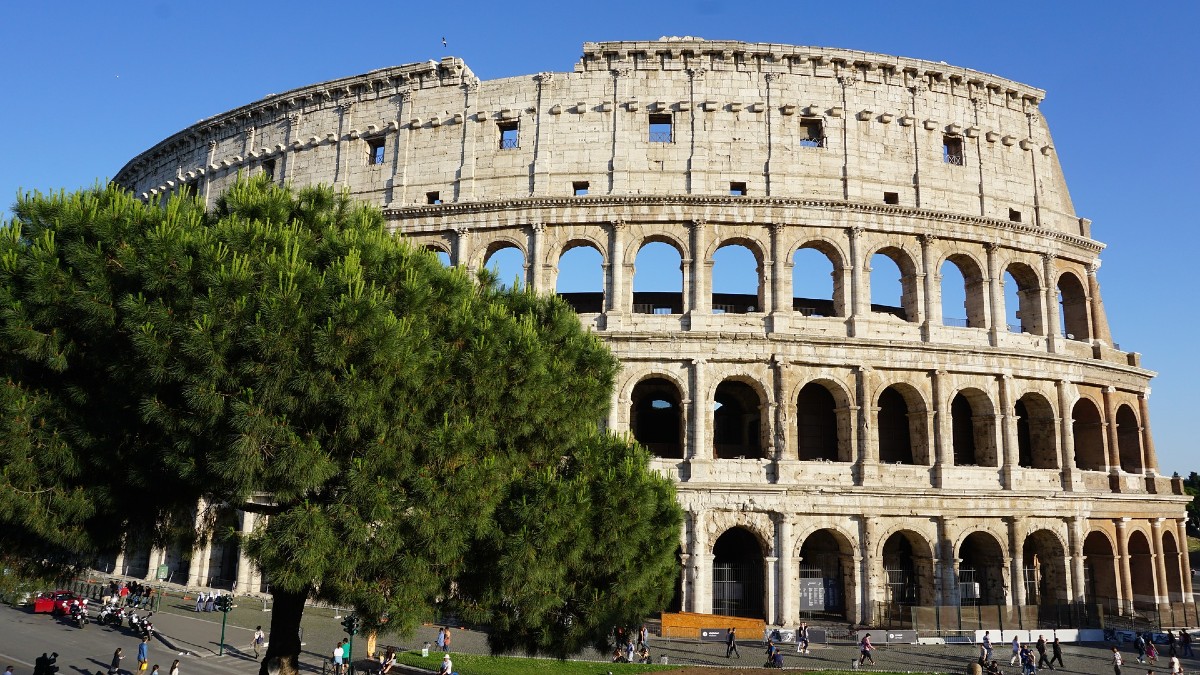
The best-known example of a Roman amphitheatre is the Colosseum in Rome, which could accommodate tens of thousands of people. You can read more about Roman amphitheaters here.
So, now you know why the phrases “Greece amphitheater” or “amphitheatre Ancient Greece” are not exactly correct!
FAQs about ancient Greek theaters:
Here is some more information on ancient Greek theaters:
What were the 3 types of theatre in Ancient Greece?
The three types of theatre in Ancient Greece were tragedy, comedy and satyr play.
What are ancient Greek Theatres called?
The ancient Greek word for theatre is ‘theatron’. This is where the word ‘theatre’ comes from. In modern Greek, the word ‘theatro’ is used to indicate an open-air theater, a building where performances are held, and also a theatrical performance.
Who is the God of Theatre in Ancient Greece?
The God of theatre in Ancient Greece was Dionysus. He was also the God of wine, grapes and grape harvesting, madness and religious ecstasy.
Who invented theater?
Theater was invented in Ancient Athens in the 6th-5th century BC.
Did Greek actors wear makeup?
Actors in Ancient Greece did not wear makeup. Instead, they wore full-face masks, that were made of various materials such as leather and fabric. Due to the fragility of those materials, theater masks from Ancient Greece have not survived.
The art of theatre in Ancient Greece
I hope that this long and geeky article gave you interesting background on Greece. If you have been to any of these theatres, and seen any performances, I’d love to read your impressions below.
And since you are here, you might be interested in this article about the best Greek mythology movies!

Hello! I am Vanessa from Athens, and I love helping people discover more about my country. In recent years, I’ve become more interested in our long history. Jeez, it must be a sign of growing up!!! I loved putting together this article on Ancient Greek Theatres, and I hope that it will inspire you to do your own research!
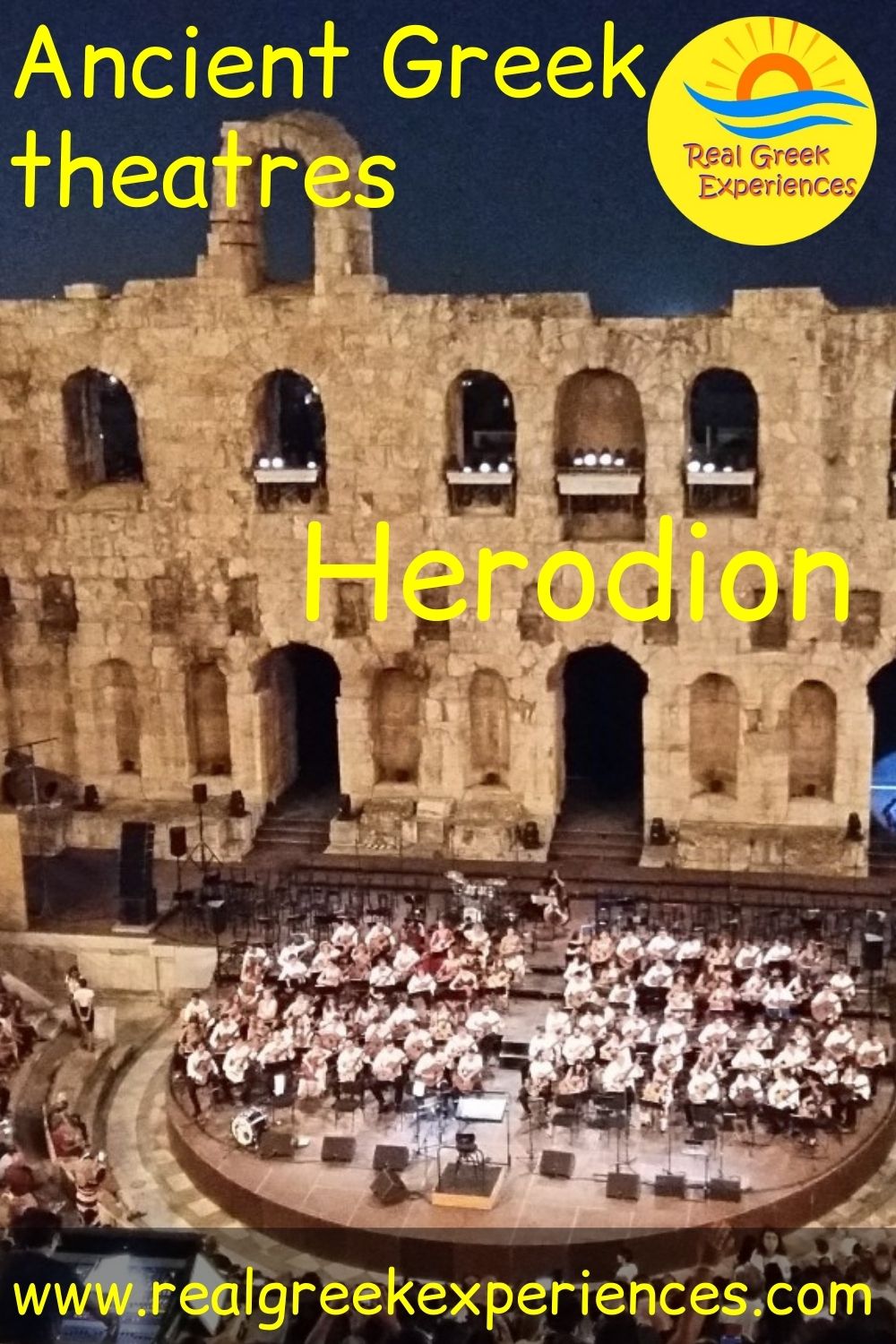

Thank you for your contribution. I found it to be very enlightening and entertaining. I am a college student at Rose State College in Midwest City, Oklahoma in the U.S. I am currently taking a Classical Mythology class, which focuses mostly on Greek Mythology. I have always had an interest in Mythology. Do you have any other submissions? I like your writing style and would love to read more of the work you have done. Thanks again.
Hi Billy! Have a look at these other articles
Greek philosophers
How did Athens get its name
The Olympian Gods
The Delphic Maxims
i like the story